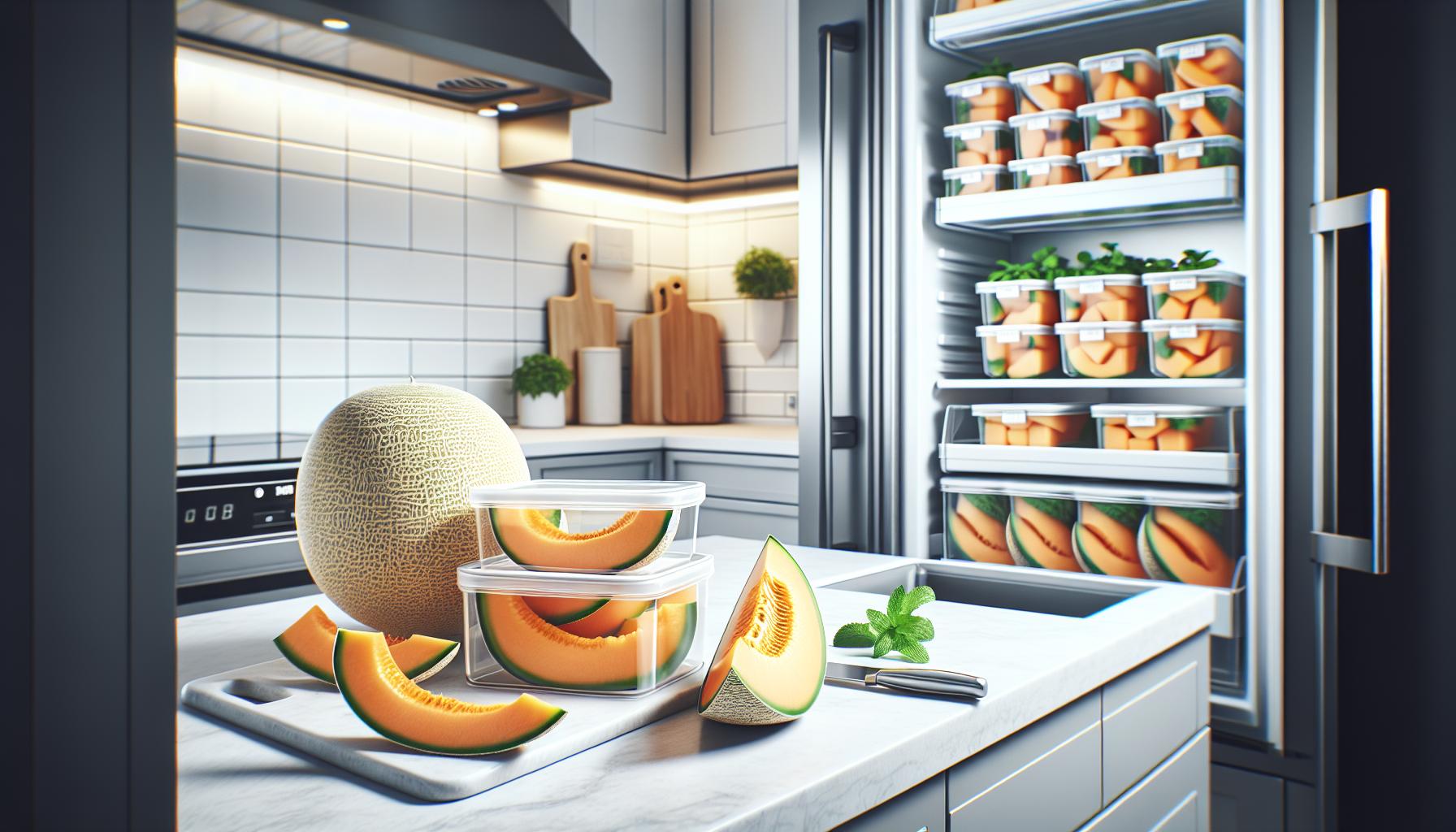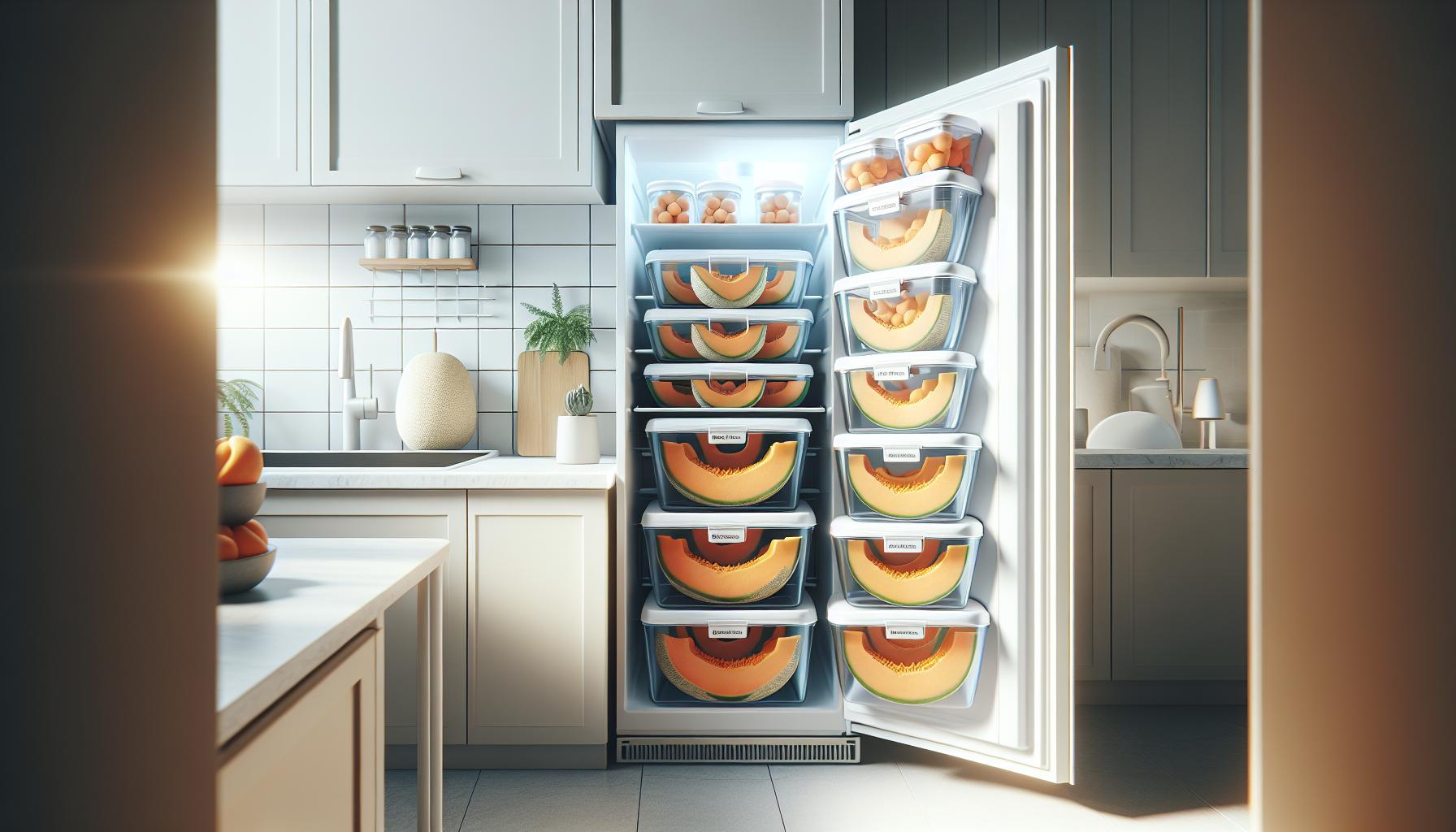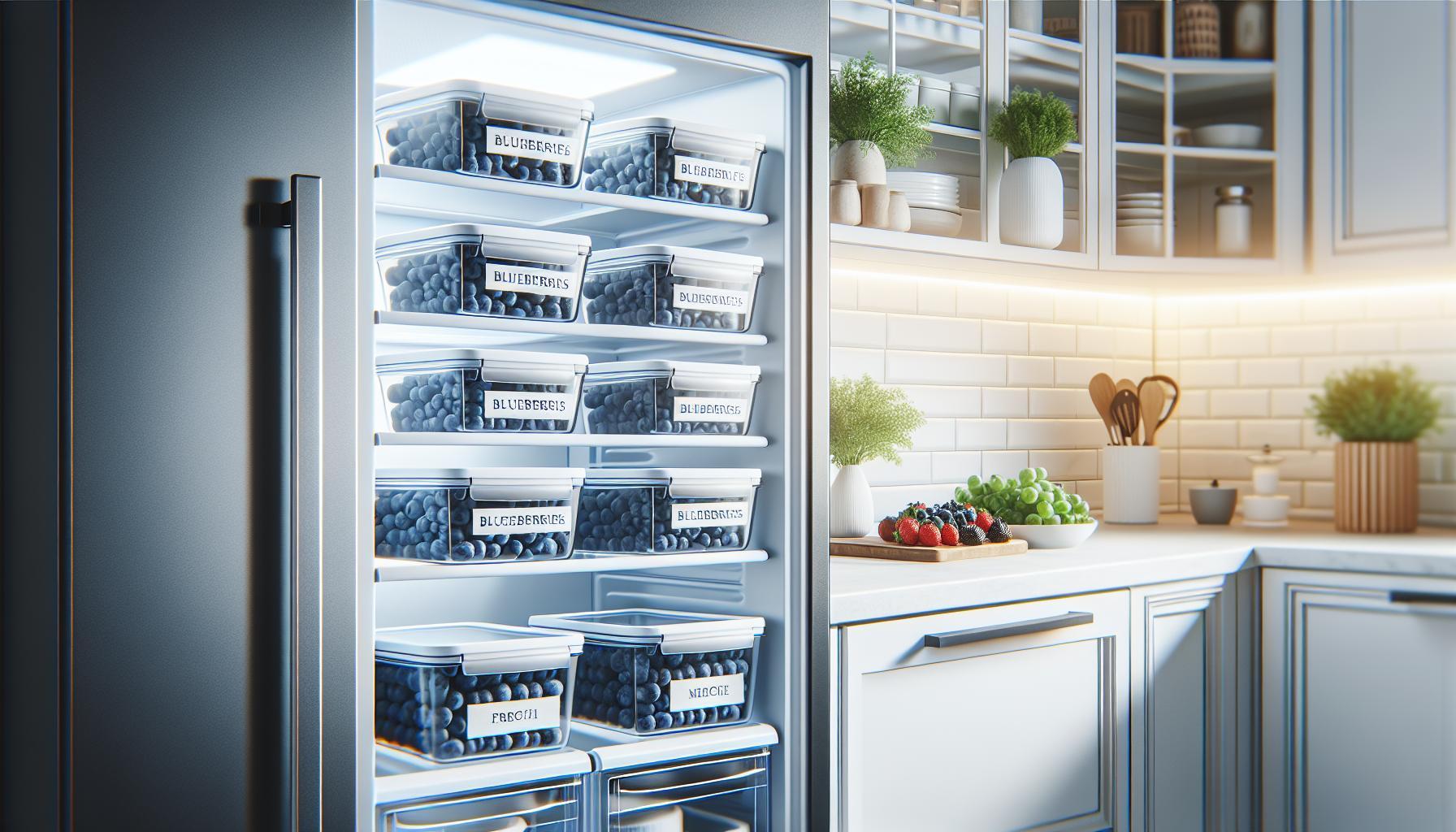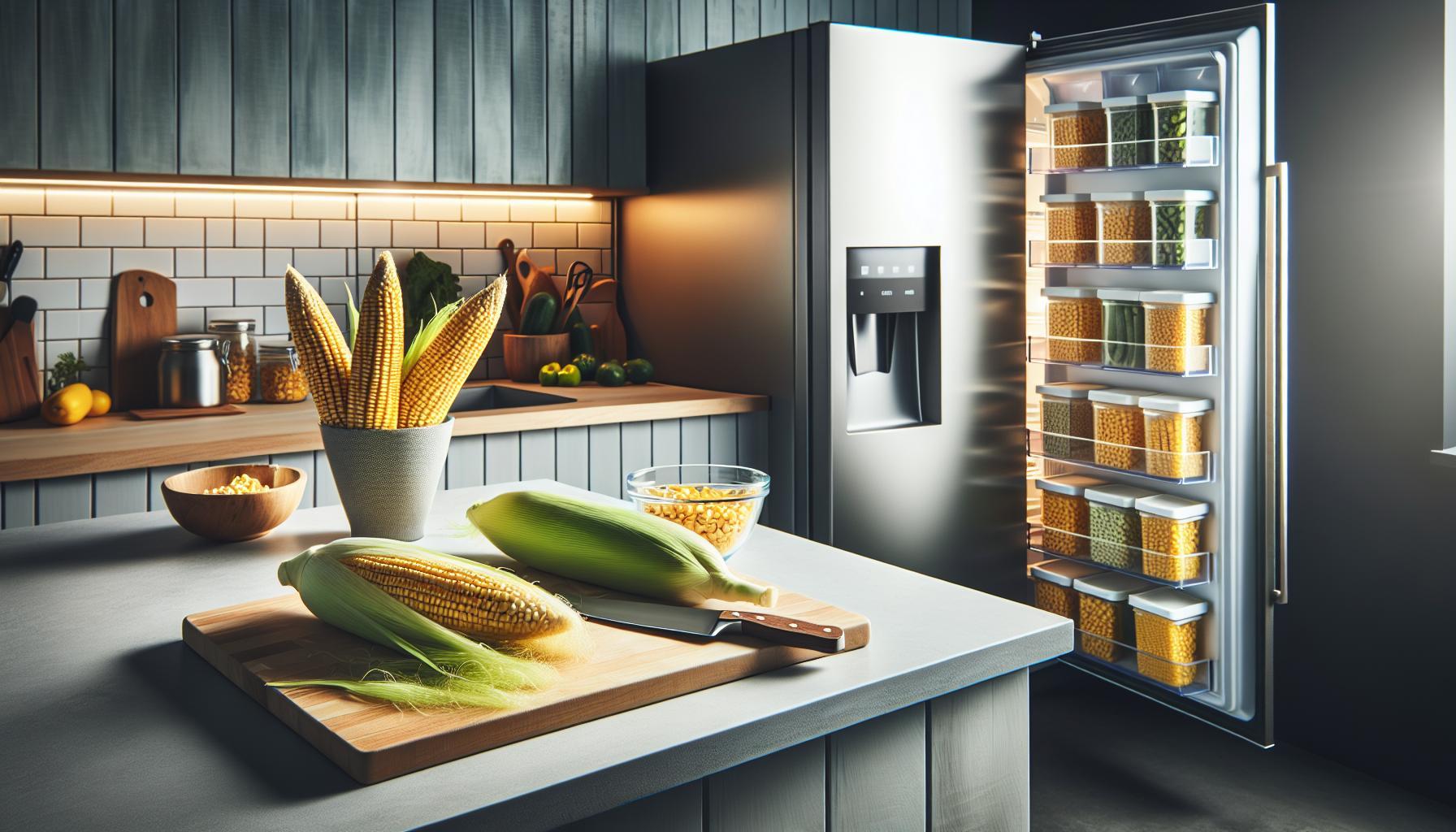Did you know that cantaloupes are not only delicious but also packed with nutrients? When you cut into a ripe cantaloupe, its juicy, sweet flesh beckons for enjoyment, but how long can you safely keep those leftovers in the fridge? Understanding the proper storage of cut cantaloupe is crucial for maximizing freshness and minimizing food waste.
If you’re like many, you might have found yourself wondering whether your leftover slices are still safe to eat a few days later. Emphasizing food safety and storage can help ensure that you enjoy the sweet taste of cantaloupe without any health risks. In this article, we’ll dive into essential guidelines for storing cut cantaloupe, revealing how to keep it sweet and safe for your next snack or meal. Prepare to store your leftovers confidently and enjoy every last bite!
How Long Can You Store Cut Cantaloupe?

Cut cantaloupe is a delightful and nutritious treat, refreshing and sweet, but it’s crucial to handle and store it properly to maximize its freshness and safety. Once cut, cantaloupe can typically be stored in the refrigerator for about 3 to 5 days. This timeframe helps to maintain its distinctive flavor and texture while ensuring it stays safe for consumption. Keeping the cut melon in an airtight container is essential, as this helps to prevent cross-contamination with other foods and minimizes exposure to air, which can lead to quicker spoilage.
Factors such as the initial freshness of the cantaloupe and how well it’s stored can influence its longevity. For instance, if the melon was previously at room temperature for an extended period before being cut, it may have a shorter shelf life. It’s advisable to consume cut cantaloupe within this timeframe for the best taste and safety. To help remember when to use your cut fruit, consider labeling the container with the date it was cut to easily track its freshness.
If you’re uncertain about the freshness of your cut cantaloupe, always look for visual indicators. Discoloration, a slimy texture, or an off smell are strong signals that it may have gone bad. To help extend its shelf life a bit longer, consider using fresh squeeze of lemon juice on the exposed flesh; the acidity can help slow down oxidation and keep the fruit looking and tasting fresh. By adhering to these guidelines, you can enjoy your delicious cut cantaloupe safely and at its best!
Understanding Safe Storage Practices for Cantaloupe
Cut cantaloupe is not only delicious but also packed with nutrients, making it a popular choice for snacking and adding to salads. However, to enjoy its refreshing taste safely, proper storage is essential. When cut, the integrity of the fruit is compromised, making it susceptible to contamination and spoilage. Understanding safe storage practices is crucial for prolonging the life and maintaining the quality of your cantaloupe.
To begin with, always store cut cantaloupe in the refrigerator. The ideal temperature for preserving fresh produce is below 40°F (4°C). Use an airtight container to minimize the risk of contamination from other foods and to reduce exposure to air, which can lead to quicker spoilage. If an airtight container isn’t available, wrapping the cut cantaloupe tightly with plastic wrap can also help, but be sure to cover all exposed sides.
In addition to proper containers, keeping track of the cut fruit’s freshness can be managed by labeling it with the date it was cut. Consuming cut cantaloupe within 3 to 5 days is recommended for optimal taste and safety. If you notice changes in texture, such as sliminess, or any off smells, it’s best to err on the side of caution and dispose of it. These indicators signal that the fruit may have gone bad, compromising both flavor and safety. Overall, taking these simple steps ensures that your cantaloupe remains a healthy and enjoyable part of your diet.
Signs Cut Cantaloupe Has Gone Bad

Cut cantaloupe offers a refreshing, sweet flavor and is prized for its hydrating qualities. However, once you’ve cut it, staying alert to signs of spoilage is crucial to ensure you’re enjoying it at its best quality and safety. One of the first indicators that cut cantaloupe may be past its prime is a change in texture. A fresh piece of cantaloupe should be firm to the touch; if it becomes overly soft, mushy, or slimy, it’s time to consider discarding it.
Moreover, your sense of smell can guide you in identifying spoilage. A fresh cantaloupe emits a sweet, pleasant scent, while cut fruit that has begun to spoil often develops an off or sour odor, indicating bacterial growth. Color can also be a crucial factor-look out for any unusual discoloration, such as brown or dark spots, which can signal deterioration. If you observe mold, whether it’s on the surface or thoroughly within the flesh, it’s best to err on the side of caution and dispose of the cantaloupe.
Storing cut cantaloupe properly is essential to avoid these spoilage signs, but even the best practices can’t prevent all occurrences. It’s recommended to consume cut cantaloupe within 3 to 5 days of slicing, and if any of these warning signs are present, discard the fruit immediately to avoid any risk of foodborne illness. By being vigilant about these indicators, you can ensure that your cantaloupe remains a delicious and safe choice for your meals and snacks.
Tips for Extending the Freshness of Cut Cantaloupe

To keep your cut cantaloupe fresh and delicious for as long as possible, it’s essential to implement effective storage practices right after you’ve sliced into this sweet fruit. One key tip is to store your cut cantaloupe in airtight containers. This will significantly reduce moisture loss and prevent the fruit from absorbing odors from other items in your fridge. Consider using glass or plastic containers with tight-fitting lids, or wrapping the pieces tightly in plastic wrap. When stored properly, cut cantaloupe can remain fresh in the refrigerator for 3 to 5 days.
Another useful tactic is to place a paper towel at the bottom of your storage container. The paper towel will absorb excess moisture, which can help maintain the fruit’s texture and prevent it from becoming mushy. Additionally, it can be beneficial to keep the cantaloupe pieces in larger chunks rather than cutting them into smaller cubes. This approach not only retains hydration better but also minimizes the surface area exposed to air, thus slowing down the oxidation process.
It’s also important to ensure that your refrigerator is set to the right temperature-ideally, below 40°F (4°C). Keeping your refrigerator consistently within this range helps to inhibit bacterial growth, ensuring your cantaloupe remains safe to eat for its full storage duration. Regularly checking the fridge temperature can help you maintain this ideal environment.
While refrigeration is effective, you might wonder if freezing cut cantaloupe is an option for longer storage. Although freezing can alter the texture of the fruit, it is feasible if you prepare it correctly. Start by cutting the cantaloupe into desired sizes, spreading the pieces out on a baking sheet to freeze individually. Once frozen solid, transfer them to airtight freezer bags or containers for up to 10 to 12 months. This method allows you to enjoy the sweetness of cantaloupe well beyond its fresh lifespan, though best used in smoothies or cooked dishes due to the change in texture upon thawing.
By following these tips, you can maximize the freshness and quality of your cut cantaloupe, ensuring that every bite is as tasty as the first.
Best Ways to Store Cut Cantaloupe in the Fridge

To keep cut cantaloupe fresher longer, implementing effective storage methods is essential. Storing your sliced cantaloupe in airtight containers is highly recommended; this practice helps maintain moisture and keep out odors from other foods in your refrigerator. Ideal containers include glass or plastic options with tight-fitting lids. As an alternative, wrapping the cut pieces tightly in plastic wrap can also work well to preserve freshness. When properly stored, cut cantaloupe remains safe to consume for about 3 to 5 days.
An often overlooked tip is to use a paper towel inside your storage container. Placing a paper towel at the bottom absorbs excess moisture, which helps prevent the cantaloupe from becoming soggy or mushy over time. Additionally, consider storing cut cantaloupe in larger chunks rather than small cubes. This strategy not only enhances hydration retention but also reduces the surface area exposed to air, thus slowing oxidation and helping to sustain the fruit’s texture.
Make sure your refrigerator is consistently set at or below 40°F (4°C). Maintaining this temperature is crucial for inhibiting bacterial growth and ensures that your cantaloupe remains safe to eat throughout its storage duration. Regularly checking and adjusting your fridge temperature can significantly improve the shelf life of not only your cantaloupe but other perishable items as well. By following these steps, you can enjoy the freshness and sweetness of your cut cantaloupe for days after preparation, minimizing food waste and maximizing your enjoyment of this delightful fruit.
Can You Freeze Cut Cantaloupe? What to Know
Freezing cut cantaloupe can be a fantastic way to extend its shelf life beyond the typical 3 to 5 days of refrigeration. However, it’s essential to understand the best practices to preserve the fruit’s flavor and texture during the freezing process. When properly frozen, cantaloupe can be stored for about 10 to 12 months, making it a convenient option for smoothies, sorbets, or as a refreshing snack anytime.
Before freezing, it’s advisable to prepare the cantaloupe appropriately. Start by cutting the fruit into bite-sized pieces or larger chunks, depending on how you plan to use it later. Then, lay the pieces on a baking sheet in a single layer, ensuring none touch each other. This step, known as flash-freezing, helps prevent the pieces from sticking together, allowing for easier portioning once fully frozen. Place the baking sheet in the freezer for about 2 to 4 hours or until the cantaloupe is completely solid.
Once the pieces are properly frozen, transfer them into airtight freezer bags or containers. Be sure to remove as much air as possible from the bags to prevent freezer burn, which can diminish the quality of your cantaloupe. Label each bag with the date to keep track of storage time. It’s important to note that while freezing maintains the fruit’s safety, the texture may change upon thawing, making frozen cantaloupe best suited for blended recipes rather than fresh consumption.
When you’re ready to use your frozen cantaloupe, you don’t need to thaw it fully. Instead, consider adding it directly to smoothies or other dishes where a bit of chill enhances the flavor and consistency. If needed for snacking, you can allow it to thaw in the refrigerator overnight for a refreshing treat. By following these careful steps, you can enjoy the sweetness of cantaloupe long after its peak season.
Nutritional Benefits of Fresh Cut Cantaloupe
Fresh cut cantaloupe is not only a delicious summer fruit but also a powerhouse of nutrition that offers numerous health benefits. With its high water content, it acts as an excellent hydrating snack, making it a perfect choice in warmer weather. One cup of cantaloupe provides essential vitamins and minerals that contribute to overall well-being, including significant doses of vitamin C, vitamin A, and potassium. These nutrients play vital roles in immune function, vision health, and muscle and nerve function, respectively.
Key Nutritional Benefits
- Vitamin C: Cantaloupe is an excellent source of vitamin C, which supports the immune system, promotes skin health, and acts as an antioxidant to counteract oxidative stress.
- Vitamin A: This vitamin is crucial for maintaining healthy vision and skin, and it also supports immune health. Cantaloupe contains beta-carotene, which the body converts into vitamin A.
- Hydration: With about 90% water, cantaloupe helps keep you hydrated, aiding in digestion and overall bodily functions.
- Low in Calories: At only 60 calories per cup, it is a satisfying, guilt-free snack that fits well into various diets.
- Potassium: Helps to regulate blood pressure and is essential for proper muscle function.
Incorporating fresh cut cantaloupe into your diet can contribute to a balanced nutrition plan. It can be enjoyed on its own, added to salads for a sweet twist, or blended into smoothies for a refreshing drink. With its combination of taste and nutritional benefits, cantaloupe not only satisfies your taste buds but also supports your health goals, making it a versatile choice for snacking or meal prep.
Creative Ways to Use Leftover Cut Cantaloupe
Leftover cut cantaloupe doesn’t have to go to waste; it can be transformed into a variety of delicious creations that maximize both flavor and utility. Whether you have a few slices left or an entire half, there are numerous ways to creatively repurpose this sweet fruit that ensure you enjoy its unique taste long after your initial servings.
One simple method is to incorporate cantaloupe into refreshing smoothies. Blend the leftover fruit with yogurt, ice, and other fruits like berries or bananas for a nutritious breakfast or snack. The natural sweetness of cantaloupe pairs excellently with many flavor profiles, creating a creamy, revitalizing drink that is especially perfect for hot days.
Additionally, try adding diced cantaloupe to salads for a vibrant twist. It complements greens with its juicy texture and sweetness, balancing the flavors of other ingredients like balsamic vinaigrette, feta cheese, or walnuts. A fruit salad combining cantaloupe, strawberries, and blueberries can also provide a delightful dessert or side dish at summer gatherings or barbecues.
If you want a unique culinary experience, consider making a cantaloupe salsa. Chop the leftover melon and mix it with diced red onions, cilantro, lime juice, and jalapeños for a refreshing topping for grilled fish or chicken. This not only enhances your dishes but also introduces a flavorful, fruity element that will impress guests at your next gathering.
Remember, creatively using your leftover cut cantaloupe not only reduces food waste but also encourages a more diverse and flavorful diet. This fruit is versatile and can seamlessly integrate into a variety of dishes, making it a valuable ingredient in your kitchen arsenal.
Comparison: Fresh vs. Pre-Packaged Cantaloupe
When it comes to evaluating the quality and longevity of cut cantaloupe, the choice between fresh and pre-packaged varieties can have significant implications for both taste and storage. Fresh-cut cantaloupe, often purchased from local farmer’s markets or grocery stores, tends to offer superior flavor and texture. Each slice is harvested and cut just prior to purchase, preserving the fruit’s natural sweetness and juiciness. However, fresh cantaloupe requires careful storage and should ideally be consumed within 3-5 days once cut to maintain optimal freshness and flavor.
On the other hand, pre-packaged cantaloupe is typically processed and sealed in airtight containers, making it a convenient option for those who prioritize ease of use over taste. These packaged slices often come with a longer shelf life, usually between 5 to 7 days, thanks to the vacuum-sealing process that reduces exposure to air and potential contaminants. However, the flavor profile may be somewhat diminished due to the time spent in packaging and potential handling during transportation.
Storage Practices
To ensure both types of cantaloupe are stored properly, follow these tips:
- Fresh Cantaloupe: Store in the refrigerator immediately after cutting, keeping it in a sealed container to minimize moisture loss and prevent odor absorption from other foods.
- Pre-Packaged Cantaloupe: Always check the expiration date and store in the fridge as recommended. Avoid opening the package until you are ready to consume to maintain freshness.
Ultimately, while fresh cantaloupe may provide a better taste experience, pre-packaged options allow for greater flexibility and longer storage. Choose based on your needs: fresh for taste and quality, and pre-packaged for convenience and extended shelf life. Regardless of choice, always ensure proper storage conditions to maximize the fruit’s delightful flavors and nutritional benefits.
When to Dispose of Cut Cantaloupe: Safety Guidelines
Determining when to dispose of cut cantaloupe is crucial for maintaining your health and preventing foodborne illnesses. This sweet, juicy fruit, while delicious, can become unsafe if not stored correctly or consumed within a reasonable timeframe. Generally, fresh cut cantaloupe should be eaten within 3 to 5 days when stored properly in the refrigerator. If you notice that the cantaloupe has started to develop a sour smell, an off-putting texture, or slimy surfaces, it’s time to throw it away. These changes suggest the presence of spoilage bacteria or molds that could lead to food poisoning.
For pre-packaged varieties, always check the expiration date and the condition of the packaging. Even if the sell-by date isn’t reached, if the cantaloupe shows signs of discoloration or has absorbed odors from other foods in the fridge, it’s safer to discard it. Eating or serving cantaloupe that has been stored beyond its due date-or showing any spoilage signs-can lead to digestive discomfort or illnesses.
Some practical guidelines for disposal include:
- Smell: If the fruit emits a sour or fermented odor, it’s best to err on the side of caution and dispose of it.
- Texture: A slimy or mushy texture indicates spoilage; fresh cantaloupe should always feel firm to the touch.
- Appearance: Discoloration, dark spots, or mold are clear signs that the fruit should not be consumed.
Lastly, when in doubt about the safety of cut cantaloupe, it is advisable to dispose of it. Food safety is paramount, and adhering to these guidelines can help avoid unwanted health risks while allowing you to enjoy fresh fruits with peace of mind.
Faq
Q: How do I know if cut cantaloupe is spoiled?
A: Signs that cut cantaloupe has gone bad include a sour smell, slimy texture, dark spots, and discoloration. Always check for these indicators before consuming, and if in doubt, it’s safer to discard it to prevent foodborne illness.
Q: What is the best way to store cut cantaloupe in the fridge?
A: Store cut cantaloupe in an airtight container to retain moisture and freshness. Place the container in the fridge’s crisper drawer for optimal storage conditions. This practice helps prolong its shelf life to about 3 to 5 days.
Q: Can you eat cut cantaloupe after 5 days in the fridge?
A: While cut cantaloupe may still seem fine after 5 days, it’s crucial to check for any signs of spoilage before eating. Consuming it after this period increases the risk of foodborne illnesses.
Q: How can I freeze cut cantaloupe effectively?
A: To freeze cut cantaloupe, cube the fruit and spread it in a single layer on a baking sheet. Freeze until solid, then transfer to a freezer-safe bag. Use within 6 to 12 months for best quality.
Q: Is it safe to eat cantaloupe that’s left out overnight?
A: No, it is not safe to eat cut cantaloupe that has been left out overnight. Bacteria can grow rapidly at room temperature, making it potentially harmful. Discard any unrefrigerated cut cantaloupe.
Q: How long does pre-packaged cut cantaloupe last?
A: Pre-packaged cut cantaloupe typically lasts about 5 to 7 days in the fridge if unopened. Once opened, it’s best to consume it within 3 to 5 days for optimal freshness and safety.
Q: Can I use cut cantaloupe in smoothies after it’s been in the fridge for a few days?
A: If cut cantaloupe has been stored properly and shows no signs of spoilage, it can be used in smoothies up to 3 to 5 days after cutting. Always ensure it’s fresh to maintain smoothie quality.
Q: Why does cut cantaloupe turn brown in the fridge?
A: Browning in cut cantaloupe occurs due to oxidation, which happens when its flesh is exposed to air. To minimize browning, store it in an airtight container and consume it promptly.
Insights and Conclusions
When stored properly, cut cantaloupe can maintain its freshness for about 3 to 5 days in the fridge. Maximizing your melon enjoyment is just a few steps away-be sure to keep it in an airtight container and consume it quickly to savor its sweet flavor and texture. If you’re curious about other fruits and their storage hacks, check out our guides on storing sliced strawberries and the best ways to keep your fruits fresh.
Don’t let your leftover cantaloupe go to waste! Start implementing these tips today for a delicious, safe snacking experience. If you found this information helpful, consider signing up for our newsletter for more insights on food storage safety and delicious recipes. We love hearing from you, so drop your thoughts or questions in the comments below, and let’s keep the conversation going!





